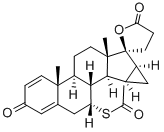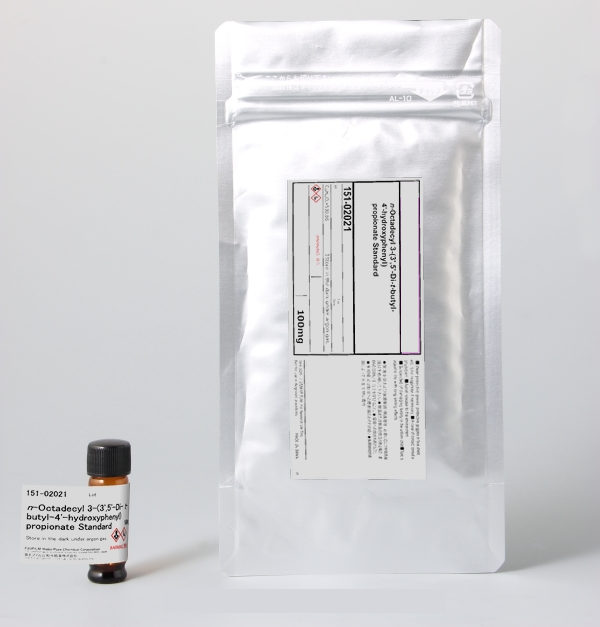16-MERCAPTOHEXADECANOIC ACID
Synonym(s):MHDA
- CAS NO.:69839-68-5
- Empirical Formula: C16H32O2S
- Molecular Weight: 288.49
- MDL number: MFCD00674018
- SAFETY DATA SHEET (SDS)
- Update Date: 2025-01-27 09:38:02

What is 16-MERCAPTOHEXADECANOIC ACID?
The Uses of 16-MERCAPTOHEXADECANOIC ACID
Formation of interchain carboxylic anhydrides on self-assembled monolayers with Fluoro N,N,N′,N′-tetramethylforamidinium hexafluorophosphate.1 This compound is used in self-assembly to produce hydrophilic SAMs. The resulting monolayers which are terminated with carboxylic acids can be further functionalized2 with various amines and alcohols to introduce more complex end groups or multiple layers.3
The Uses of 16-MERCAPTOHEXADECANOIC ACID
MHA forms a SAM on gold surfaces by pen lithography (PPL). It finds potential application in bio-engineering. It can also be used to functionalize gold-dypiramids, which can fabricate nano-resonators for shell-isolated nanoparticle enhanced Raman-spectroscopy (SHINERS).
What are the applications of Application
16-Mercaptohexadecanoic acid is a carboxylic acid used to form carboxylic anhydrides on self-assembled monolayers with Fluoro N,N,N′,N′-tetramethylforamidinium hexafluorophosphate
General Description
16-Mercaptohexadecanoic acid (MHA) is an alkanethiol with long chained ?CH2 groups, which form a self-assembled monolayer (SAM) on a wide range of substrates.
Properties of 16-MERCAPTOHEXADECANOIC ACID
| Melting point: | 65-69 °C |
| Density | 0.787 g/mL at 25 °C |
| Flash point: | 52 °F |
| storage temp. | 2-8°C |
Safety information for 16-MERCAPTOHEXADECANOIC ACID
| Signal word | Danger |
| Pictogram(s) |
 Exclamation Mark Irritant GHS07  Health Hazard GHS08  Environment GHS09 |
| GHS Hazard Statements |
H315:Skin corrosion/irritation H319:Serious eye damage/eye irritation H372:Specific target organ toxicity, repeated exposure H413:Hazardous to the aquatic environment, long-term hazard |
| Precautionary Statement Codes |
P264:Wash hands thoroughly after handling. P264:Wash skin thouroughly after handling. P273:Avoid release to the environment. P280:Wear protective gloves/protective clothing/eye protection/face protection. P302+P352:IF ON SKIN: wash with plenty of soap and water. P305+P351+P338:IF IN EYES: Rinse cautiously with water for several minutes. Remove contact lenses, if present and easy to do. Continuerinsing. P332+P313:IF SKIN irritation occurs: Get medical advice/attention. P337+P313:IF eye irritation persists: Get medical advice/attention. P501:Dispose of contents/container to..… |
Computed Descriptors for 16-MERCAPTOHEXADECANOIC ACID
New Products
Indole Methyl Resin tert-butyl 9-methoxy-3-azaspiro[5.5]undecane-3-carboxylate Boc-His(Boc)-OH 2-CTC Resin 4-Chloro-7-tosy1-7Hpyrrolo[2,3-d]pyrimidine 5,7-Dibromo-1H-indole 2,5-dichloro-N-hydroxy-4,6-dimethylpyridine-3-carboximidamide 2,2-Dimethoxy-7-azaspiro[3.5]nonane hydrochloride 4-chloromethyl-5-methyl-1,3-dioxol-2-one (DMDO-Cl) R-2-BENZYLOXY PROPIONIC ACID 1,1’-CARBONYLDIIMIDAZOLE 1,1’-CARBONYLDI (1,2-4 TRIAZOLE) N-METHYL INDAZOLE-3-CARBOXYLIC ACID 4-((2-hydroxyethyl)thio)benzoic acid 1-(TERT-BUTOXYCARBONYL)-2-PYRROLIDINONE Methyl 6-methylnicotinate 3-Pyridineacrylic acid tert-Butyl carbazate TETRAHYDRO-2H-PYRAN-3-OL 2-((4-morpholinophenylamino) (methylthio) methylene) malononitrile 3-(4-morpholinophenylamino)-5-amino-1H-pyrazole-4-carbonitrile 2,4-dihydroxybenzaldehyde 1,3-Diethyl-1,3-Diphenylurea Methyl 2-methylquinoline-6-carboxylateRelated products of tetrahydrofuran





You may like
-
 16-Mercaptohexadecanoic acid CAS 69839-68-5View Details
16-Mercaptohexadecanoic acid CAS 69839-68-5View Details
69839-68-5 -
 16-Mercaptohexadecanoic acid CAS 69839-68-5View Details
16-Mercaptohexadecanoic acid CAS 69839-68-5View Details
69839-68-5 -
 Pyridine 99.5% HPLC /UV SpectroscopyView Details
Pyridine 99.5% HPLC /UV SpectroscopyView Details
110-86-1 -
 Piperazine Spot supply, best priceView Details
Piperazine Spot supply, best priceView Details
110-85-0 -
 Dibutyl PhthalateView Details
Dibutyl PhthalateView Details
84-74-2 -
 Imidazole Spot supply, competitive priceView Details
Imidazole Spot supply, competitive priceView Details
288-32-4 -
 Octadecyl 3-(3,5-di-tert-butyl-4-hydroxyphenyl)propionate 98% (GC)View Details
Octadecyl 3-(3,5-di-tert-butyl-4-hydroxyphenyl)propionate 98% (GC)View Details
2082-79-3 -
 Thiourea 99% ARView Details
Thiourea 99% ARView Details
62-56-6
